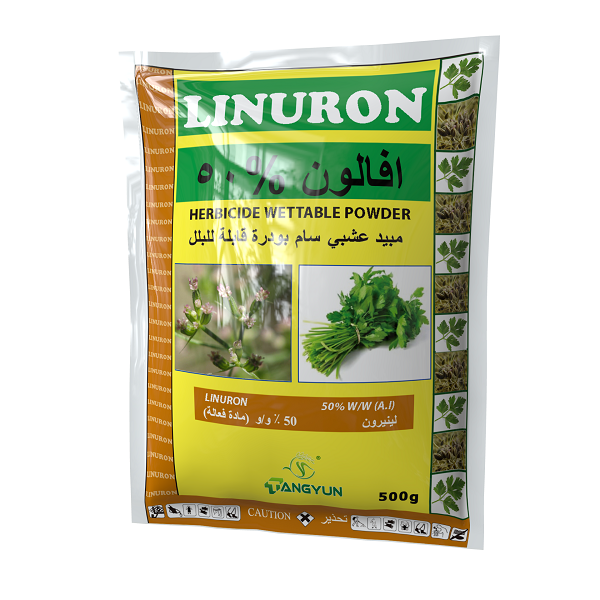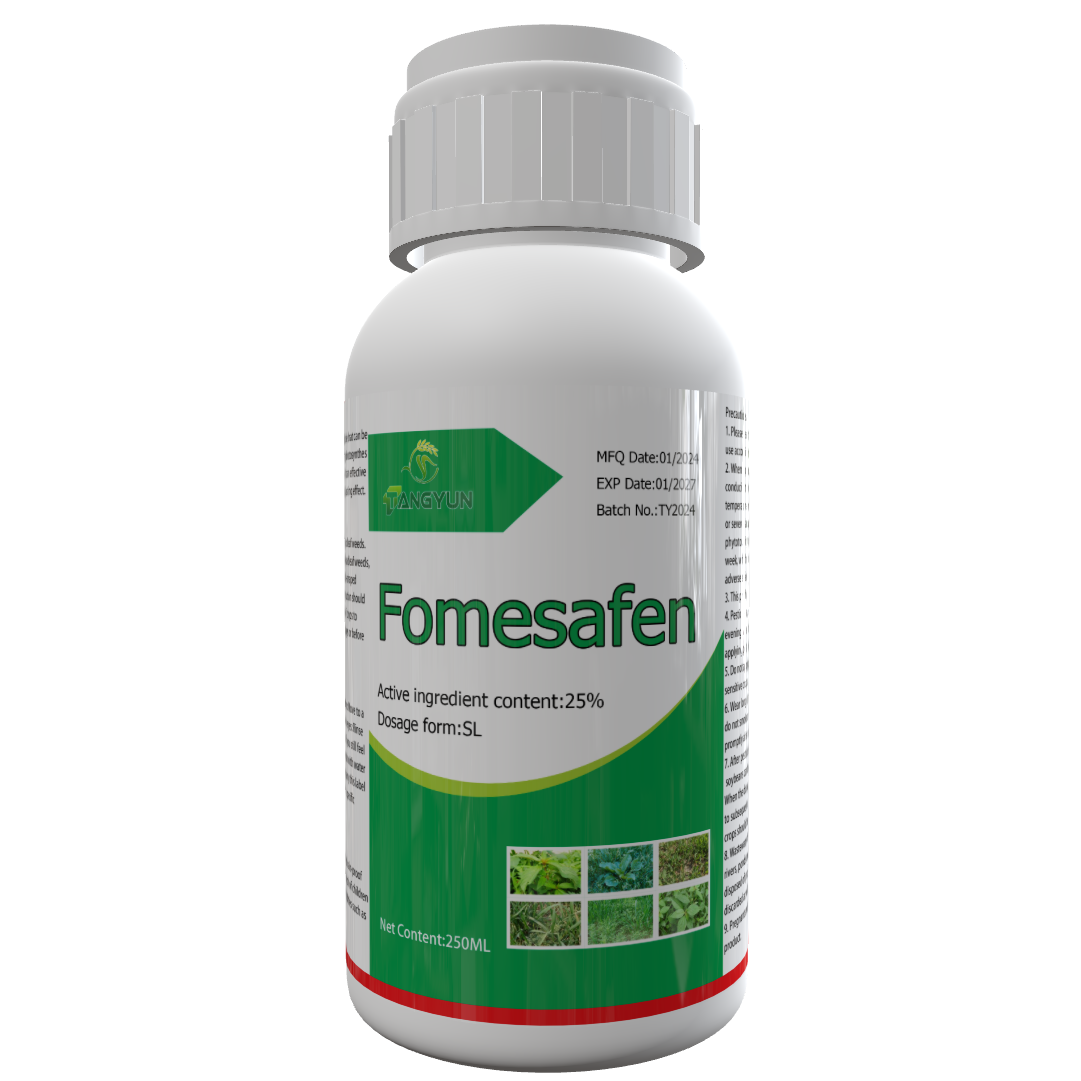Oxadiazon
Tech grade:95%
| Oxadiazon 250g/l EC | Annual weed on transplanted rice fields | 1500-1800ml/ha. |
| Oxadiazon 380g/l SC | Annual weed on rice fields | 700-900ml/ha. |
| Oxadiazon 10% +Pretilachlor30%EC | Annual weed on rice fields | 1200-1500ml/ha. |
| Oxadiazon 11% +Pretilachlor 32% +
Oxyfluorfen 9%EC |
Annual weed on rice fields | 400-550ml/ha. |
| Oxadiazon 10% +Butachlor 50%EC | Annual weed on rice/cotton fields | 1300-1700ml/ha. |
| Oxadiazon 7% +Butachlor 24% +
Oxyfluorfen 12%EC |
Annual weed on rice fields | 600-900ml/ha. |
| Oxadiazon 15% +Clomazone 10%EC | Annual weed on rice fields | 1200-1800ml/ha. |
| Oxadiazon 12% +Pretilachlor 30% +
Clomazone 12%EC |
Annual weed on rice fields | 1000-1300ml/ha |
Precautions:
1. Use once at most during the entire growth period of the crop.
2. Strictly apply evenly according to the recommended use technology, and do not use beyond the scope. When used in rice direct seeding paddy fields, the field surface should be leveled 3 days before sowing, and 300-600 liters of water per hectare should be sprayed for soil sealing. Safety tests must be conducted before use.
3. Apply the drug away from aquaculture areas, river walls and other water bodies. It is forbidden to wash the application equipment in rivers and ponds. This agent is toxic to bees and fish. The packaging should be properly disposed of after emptying and washing. It cannot be used for other purposes. It is strictly forbidden to pollute ditches, water sources and fish ponds with its liquid or pollutants. It is strictly forbidden to use it on flowering plants during the flowering season. Its pollutants and waste should be centrally incinerated.
4. This agent has a moderate irritating effect on the eyes and skin. Misuse may damage health. Avoid direct contact with the eyes and body. Wear protective goggles, masks and gloves, wear protective clothing, and do not eat or smoke when applying. Wash exposed skin thoroughly with soap and water before eating or smoking after use.
5. Avoid contact with this product by pregnant and lactating women. It is forbidden to use in rice fields where fish or shrimps are raised, and field water after application should not be directly discharged into the water body. It is forbidden to use in areas where natural enemies such as trichogrammatids are released.










